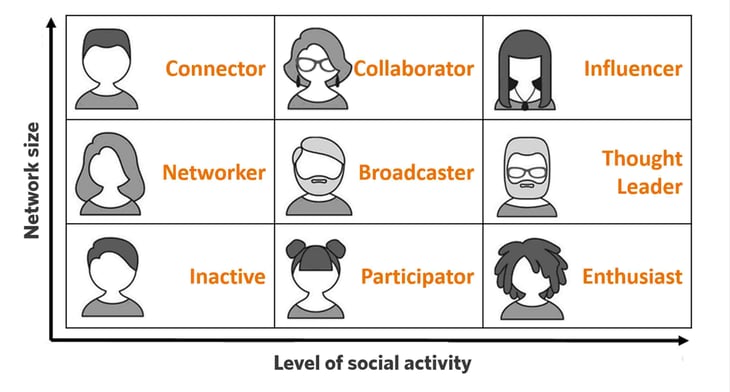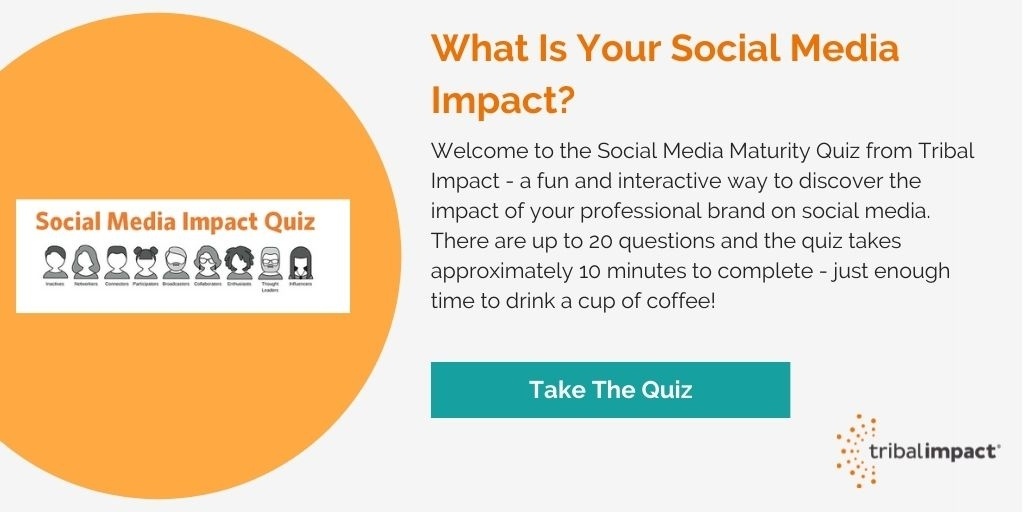Sometimes employees want to get involved in an advocacy programme but are afraid to put themselves out there on social media.
These fears – which happen for a variety of reads – can then hold them back in their role, and hinder their ability to connect with others in their industry. And it could reduce the effectiveness of your advocacy programme if enough employees are inactive because of their fears.
You’ll never get every employee to post on social media. Some people just aren’t interested in using it, or in using to for business purposes, and that’s ok.
What you need to do is separate those who are afraid to post from those who just don’t want to.
Send A Questionnaire
The easiest way to find out about employees’ attitudes to social media is to ask them. Do they want to post on it more but don’t know where to start? Are they just not interested?
Don’t make the questions too complicated or overwhelming. You can always ask for more depth if someone answers vaguely, or you can create different branches to the questionnaire.
For instance, if someone is uninterested in being part of an advocacy or social selling programme, their time is better spent on what’s working for them now than in answering questions about social media.
If, on the other hand, their reluctance comes from fear, there’s more room to ask questions that can help you find the cause of the problem.
Figure Out What They’re Afraid Of
Everyone is afraid of something, and for some people, that includes posting on social media. It could be that they don’t want to put themselves out there for personal reasons. Or it could be that they dislike being the centre of attention and feel ‘showy’ or narcissistic when they do it. They may worry about what other people will think of them when they post.
One way you can reframe it for them is to talk about how social media isn’t about bragging – although there will always be some people who use it for that – it’s a tool which can be used to help people.
So instead of them seeing social media as a place to attract unwanted attention, they could see it as a way to help people within their community solve their problems.
Getting involved with, and creating, conversations with those who have similar interests and backgrounds is where its real power comes in.
Another thing they may be afraid of is getting it wrong. If the company has recently introduced a new social media programme, or the employee is new, unclear information, or the fear of getting it wrong, is another thing that can really hold employees back.
Remember The Past
Employees who’ve been at the company for a long time may still be following an outdated social media policy. Usually these involve something along the lines of ‘don’t post on social media during work hours and don’t talk about your job’.
While this is clear guidance, it can make it harder to trigger the mindset shift required to get employees onboard with a new social media or employee advocacy programme.
Or, if someone came from another role when social media was a no-no, they may also be reluctant to engage on social media at all.
It can help to retrain them and introduce what the new rules are. Make the rules just as clear, but use interactive methods such as a quiz or include clear examples so that they can visualise what’s expected.
If you’ve already got champions in place, they can help those who are new or confused about what being an advocate means by filling in some of the gaps for them.
Show Them Their Digital Footprint
One thing that can encourage a different kind of social media usage is when someone looks up their digital footprint.
They can do this by researching their name on a search engine of their choice.
What comes up? Is it the digital footprint they want to see? Is their Facebook profile locked down?
The more information someone has on what’s out there about them now, the more likely they are to want to take control of – or maintain control of – it.
Find Their Level Of Maturity
Their level of maturity will change how you should approach the next steps. Someone who’s at the start of their journey will require more coaching than someone who’s an experienced user but has never used it for business purposes.
Our table will also help you to work out which direction might be a good fit for employees.

Those on the bottom left will have less of an idea of how to use social media for business purposes, while those further along to the right will be more active posters.
Not every employee will fit clearly into a box, but employees should recognise themselves from our stages of social media maturity.
Discover What Interests them
Everyone is drawn in by different aspects of social media. Would they like to learn new things or feel inspired?
Some people like the community aspect of social media, others like to learn new things, others use it to find the latest news.
On top of that, everyone looks at different areas of interest. If you can tap into the areas that interest someone, it’s going to be easier to get them onboard because it’s encouraging them to be a bigger part of something that already interests them.
A simple way to get them to start is to follow 1-3 areas of interest on social media. They don’t have to be related to the business, just something that interests them. Follow thought leaders and hashtags within those topics.
Their Newsfeed/Timeline will then be populated more with posts that are of interest to them, so they’ll come across more conversations that are happening which they have opinions and feelings about. They won’t be able to help but engage.
Consider Their Role
Every role can benefit from social media in a different way. Engineers, for example, are different to marketing people. They have different backgrounds and strengths, but they still have valid messages that they can share. Marketers are more used to using social media and creating great content, while engineers have the knowledge but may not have the writing or speaking skills needed for social media.
Salespeople may like that they can engage with their target audience in a more organic way, and potentially reduce the buying cycle.
Lean Into Their Strengths (And What They Enjoy)
The best way to get employees on board is to encourage them to do more of what they enjoy. Are they a great writer who could write amazing blog posts? Are they a fantastic speaker who’d excel as a podcast host? Or maybe they’re comfortable doing lives and could host webinars?
They don’t have to be the most experienced person in the world. They may have never written something or been on camera before. But everyone has to start somewhere, and, like all skills, they’ll get better with practice.
Finding these strengths, and encouraging them, will keep employees more engaged at the business, because it will make them feel valued, and it will benefit your social media strategy.
Create Engaging Content
Coming up with content ideas doesn’t have to be scary, time-consuming, or exhausting. It’s as simple as rounding up the top questions you get asked by your customers and creating content around that.
The simple act of answering those FAQs in content marketing can reduce the number of enquiries your customer support and sales teams get, leading to shorter buying cycles and happier customers. Which also leads to happier employees because they’re dealing with fewer repeat enquiries.
Choose Your Battles
You’re probably going to have to repeat yourself a lot to get your message across and convince employees they don’t have to be afraid of posting on social media.
But, no matter how hard you try, you’ll never win over everyone. Some employees will never see the point in it and will prefer to focus on other areas of their role.
Instead of focusing your energy on winning over those people, spend it on encouraging those who are interested. Naysayers will be more likely to be won over by visible results than anything else and may eat their words when they see how impactful your new strategy is.
Conclusion
While you can’t convince everyone to be a part of your social media strategy, you can support those who want to be a part of it but are afraid. There are lots of reasons employees can feel afraid to post on social media, but if you can get to the cause of it, you can help to build their confidence on social media and help them become your company’s next social media star.
